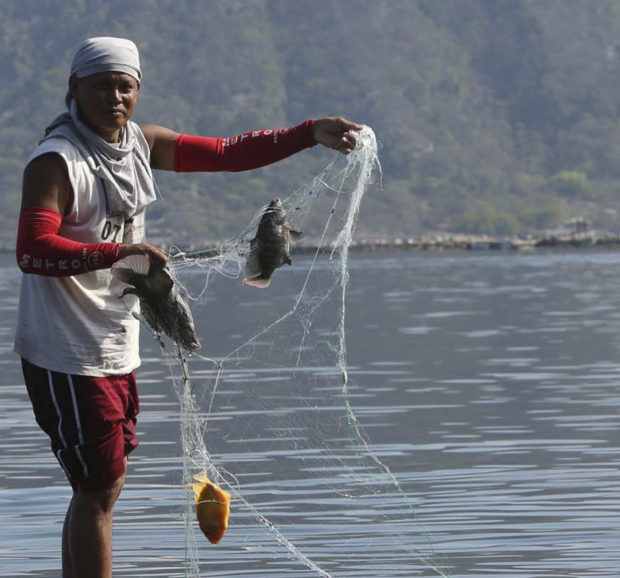MANILA, Philippines — Authorities on Monday gave assurance to the public that tilapia (black carp) and other fish variants harvested from Taal Lake are safe for consumption despite the restiveness of Taal Volcano.
Fish prices in Metro Manila markets should also remain stable as there have been no disruptions in the delivery of supply.
In a media briefing with officials from the Department of Agriculture (DA), Sammy Malvas, regional director of Calabarzon, said water sample tests conducted by the agency showed that the water quality in Taal Lake remains normal.
Thus, consumers should not worry about any health hazards from eating fish coming from the lake.
Malvas added that retail prices of fish in public markets, especially tilapia, should not increase as seen in the DA’s recent price monitoring reports.
Baseless claims
As of last week, prices of tilapia have risen by P10 per kilogram, which retailers blamed on the supposed shortage caused by Taal Volcano’s latest eruption.
“There shouldn’t be any increase in prices,” said Agriculture Undersecretary Cheryl Caballero. “Even in cases where there may be shortages in fish supply, the agency is already implementing programs to fast-track the delivery of fish from other sources.”
Advocacy group Tugon Kabuhayan, led by former Bureau of Fisheries and Aquatic Resources director Asis Perez, also urged consumers not to believe baseless claims that fish variants from Taal Lake were unsafe to eat due to the water’s high sulfur content.
“It took several days to reverse the negative impact [of the misinformation] … The farmers were hit twice—one by the volcanic eruption and the other by the adverse advisory,” the group said.
Only plants affected
Nestor Natanauan, president of Taal Lake Aquaculture Alliance Inc. (TLAAI), added that the phreatic explosion of the Taal Volcano would not affect fish species thriving in the surrounding lake as the debris from the explosion did not reach the waters while sulfur dioxide emitted by the volcano only affected plants.
“Fish do not consume ash from the volcano,” he stressed.
Daily fish production from the 6,000 cages of TLAAI members reaches between 200 to 250 tons daily, excluding the artisanal tilapia caught outside the cages such as tawilis, maliputo, biya, and other local species.
Overall, the combined production of aquaculture and capture fishing activities in the lake could reach 100,000 metric tons per year.
About 70 percent of the volume is consumed outside the province of Batangas and is mostly delivered to Metro Manila, making it an important economic resource.
